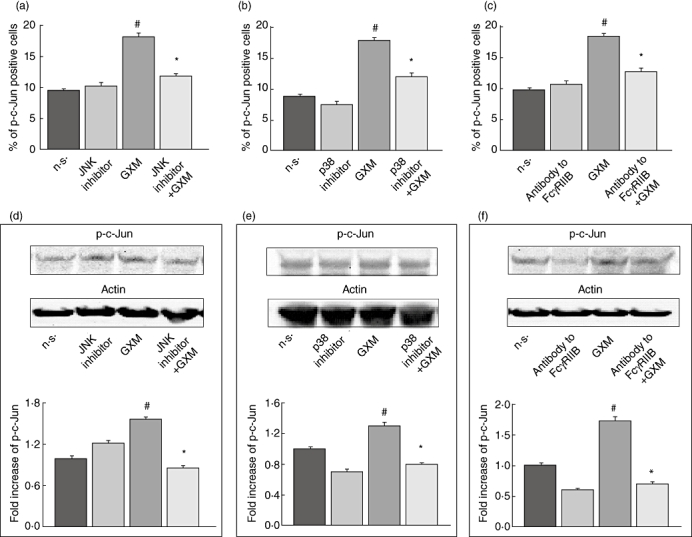Fig. 5.

Role of FcγRIIB, p38 and c-Jun NH2-terminal kinase (JNK) in glucuronoxylomamman (GXM)-induced c-Jun activation. MonoMac6 cells (1 × 106/ml), pretreated and non-treated, with antibody to FcγRIIB (0·1 µg/ml) or JNK inhibitor (0·5 µM) or p38 inhibitor (1·0 µM) were incubated for 2 h in the presence or absence of GXM (100 µg/ml). The analysis was performed by flow cytometry and Western blotting. (a,b,c) Percentage of p-c-Jun-positive cells. Bars represent the mean ± standard error of the mean (s.e.m.) of three experiments. (d,e,f) Western blotting for p-c-Jun. Actin was used as loading control. Cells treated with diluent (dimethylsulphoxide) were also run in parallel; the results were similar to those obtained in absence of inhibitors. Optical density (OD) of reactive bands was measured and normalized by the actin intensity in the same lane. C-Jun activation was quantified relative to untreated cells. Blots are representative of five independent experiments with similar results. The fold increase is the mean ± s.e.m of five experiments. The incubation with irrelevant goat polyclonal immunoglobulin (Ig)G did not affect c-Jun activation. (a,b,c,d,e,f) #P < 0·05 (GXM-treated versus untreated); *P < 0·05 (JNK inhibitor, p38 inhibitor or antibody to FcγRIIB plus GXM-treated, versus GXM-treated).
